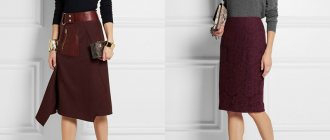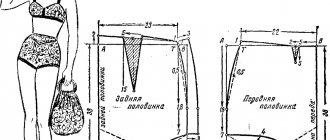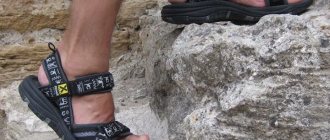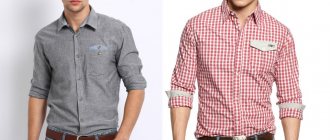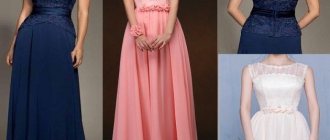History and varieties
More than 2 thousand years ago, the inhabitants of Scotland came up with a way to make practical and warm material for clothing from dyed threads. Craftsmen from each region came up with their own special patterns and thread colors for the fabric. Therefore, the colors and patterns of tartan fabric served as a kind of passport for its owner. They were used to determine the place of birth, membership in a specific clan, and social status of a person.
General view of the fabric
The more complex the pattern and the more shades in the tartan, the higher the kilt owner was in position. For example, ordinary people wore skirts made of plain fabric, dark checkered patterns were used for hunting suits, royal tartan contained 7 bright colors from natural dyes.
Since the mid-18th century, after the Jacobite uprising, tartan was banned. Only in 1822, when the British King George IV wore a checkered kilt to meet his subjects, did national clothing return to the country. Since that time, the cell began to conquer the world and gained popularity. Thanks to the use of synthetic dyes, new color combinations of patterns are constantly being created.
All checkered designs are registered in special tartan registers:
- Scottish Tartans World Register is a closed list. It contains 3.5 thousand unique tartan designs that have long belonged to royal dynasties, families, cities, and educational institutions.
- Scottish Register of Tartans contains 7 thousand patterns. Anyone can come up with and register a new checkered pattern in it.
The most popular types of plaid are:
- the Caledonia tartan, which has a recognizable blue-black-green check on a red background;
You might be interested in Description of the properties and characteristics of Softshell fabrics
Caledonia pattern
- stripes of blue, green, gray muted colors on a black background distinguish the Black Watch fabric, which was allowed to be worn by royal troops during the ban on tartan;
Material "Black Watch"
- The Nova tartan with black, white and red stripes on a light brown background is the identifying mark of the Burberry brand;
Fabric "Nova"
- “Glenchik” consists of black and white graphic patterns that form a cellular appearance;
Glenchik material
- the “Houndstooth” pattern with the corners of the cells elongated diagonally is considered a classic for creating a respectable image;
Tartan "Houndstooth"
- A special feature of the Vichy cell is its bright small cells.
Vichy pattern
Please note! Tartan today refers to any checkered fabric, including that obtained by covering non-woven material or knitwear with a pattern.
Types and their properties
According to composition and purpose, the material is divided into:
- Suit tartan is a dense fabric, made of wool, sometimes with the addition of synthetics, soft to the touch. It holds its shape well and retains heat. Suits and jackets are made from it;
- Dress fabric - contains cotton. The material is pleasant to the body and has good hygienic properties. Dresses, shirts, blouses, skirts are made from it;
- synthetic fabrics . They are usually made from polyester, or a mixture of it with viscose or cotton. The checkered print is applied to the finished canvas. The materials have good stretch, do not deform, and are highly durable and resistant to abrasion. They are used to make clothes and home textiles.
Classic wool fabric is also divided by pattern. In Scotland, there is a special register in which variations of the checkered print are entered. It has about 6000 varieties.
The most famous and most often used are the following cell options:
- Caledonia - red tartan, checkered pattern on the fabric is formed by black, blue, white, green stripes;
- Royal Stewart - a design on a red background formed by black and white stripes. Additional use of blue and yellow shades is acceptable;
- Burberry is a beige tartan: red, black and white stripes form a checkered pattern on a sandy background. The print gained popularity thanks to the brand of the same name;
- Prince of Wales (glencheck) - a pattern on a gray background is formed by thin black and graphite stripes, creating a small checkered pattern;
- Black Watch - blue tartan, the cells on the fabric form stripes of different widths in dark blue, green, black or gray shades;
- Madras - canvas with asymmetrical checks, any color scheme can be used.
The color of the tartan was a distinctive characteristic. It was easy to understand from which area the fabric was delivered, or to which clan the person wearing it belonged.
Characteristics
Let's figure out what tartan is from the point of view of its manufacture.
Despite the variety of types, any tartan is a fabric with a diagonal line, relative to which the colors are located symmetrically. The creation of a tartan is based on a set of dyed threads arranged in a certain order. To create a diagonal, the threads are intertwined first in a forward and then in a reverse sequence. The twill type of weave gives Scottish tartan strength and density. Clothes made from it do not wrinkle and last a long time.
Important! Classic tartan is made of wool. Therefore, it is soft, warm, and absorbs water well.
Wool tartan
During mass production, cotton, silk, synthetic or mixed fibers are added to tartan fabric to change its texture and characteristics. For example, adding cotton increases wash shrinkage and creasing. Artificial fibers provide increased wear resistance, but reduce hygroscopic properties.
Scottish check in clothes
Checked fabric has long ceased to be associated only with the national Welsh style. Tartan models have no age, gender or stylistic restrictions. Almost all items of men's, women's and children's wardrobe are sewn from tartan.
Checkered tie
Checked clothes are combined with plain fabrics, leather goods, and jeans. A win-win option to look elegant is to match it with accessories, shoes, and bags in black colors.
You might be interested in what is remarkable about the curtain material Canvas: a description of the properties of the fabric
What kind of fabric is tartan
Initially, tartan (checkered fabric) was made from 100% wool. Nowadays the term is more associated with checkered print. It is applied to materials with any composition.
The classic suiting fabric tartan is produced using a twill weave. The pattern on it is formed by threads of different colors, and a thin scar runs along the surface.
The history of the material goes back several centuries and is inextricably linked with the history of Scotland. The first checkered fabric was woven in the 4th century and was called tartan. So-called large kilts were sewn from it. In fact, it was a large blanket that was wrapped around the waist, and the free end was thrown over the shoulders. The modern or small kilt appeared only in the 18th century. Lumberjacks were the first to wear it.
By the 19th century, tartan wool fabric became popular and still does not go out of style. It was used to make hunting suits, hats, and home textiles. In the 20th century, the material acquired cult status both among informal youth and adherents of an elegant, business style.
The familiar name for the material, tartan, has several translation options into English. So tartan fabric in English is tartan. And if we are talking about a checkered blanket, then the word plaid is used.
Tartan skirt: what to wear with it
There is a checkered skirt in every woman's wardrobe. It comes in two main types:
- With pleats around the waist or cut with pleats from the hip line. Suitable for young girls and women with an ideal figure.
Pleated skirts
- Cut on the bias. Thanks to the diagonal weave of the threads, this cut ensures a perfect fit on any figure.
Bias-cut skirt
Manufacturers produce plaid skirts of different lengths: from mini to maxi. Short skirts are suitable for students, medium length - for almost all women, regardless of age and status. Long ones are suitable for offices and walks.
Important! Tartan skirts dominate any ensemble, so the rest of the items are chosen very carefully.
Such skirts are worn with blouses, turtlenecks, T-shirts, hand-knitted sweaters, and denim jackets. The main condition is that the top of the silhouette be monochromatic.
In cold weather, thick dark tights are worn under the skirt, and a short jacket or jacket is worn on top of a single-color blouse.
Complete the look with Jane style shoes, elegant lace-up ankle boots or boots.
Plaid dresses - both for the feast and for the world
Check is deservedly one of the popular prints. A woman will attract attention in any setting if she wears a plaid dress. The main thing is that the cage pattern is appropriate to the situation and skillfully complemented with accessories.
Elegant look with a plaid dress
Tartan fabric looks organic in the following styles:
- in the form of a sundress;
- case;
- loose shirt;
- strict direct;
- widened towards the bottom.
Maxi models visually slim the figure. They are sewn with a collar and long sleeves. An evening option is a dress with a diagonal checkered pattern, with or without short sleeves. Shoes, handbag, belt, jewelry for the outfit are selected in one color, matching the color of the pattern.
For medium-length models, straight or A-line styles with a thin strap are suitable. Midi length is also suitable for wool sundresses and shirt dresses.
Summer sundresses with straps, styles with a cut-off waist, and sleeveless are sewn with a miniskirt, often full.
Note! The turn-down collar emphasizes the elegance of the outfit. Made from material in a contrasting checkered color, it becomes a stand-alone highlight.
Turn-down collar
The dress's companion items should be plain, for example:
- wool short coat;
- cardigan with tight knit;
- poncho in a contrasting color to the plaid;
- leather or denim jacket;
- light raincoat;
- stylish fur cape.
You might be interested in More details about the cooler: material properties and comparison with other fabrics
Shoes include ballet flats, ankle boots, and suede boots. It is appropriate to wear over the knee boots with the mini version.
Care
Since classic checkered fabric contains wool, this affects the care of clothing. In order for it to serve for many years, it is worth following a number of rules. So suits, jackets, and outerwear are dry cleaned. In other cases:
- Can be washed by gentle hand or in a machine on the “Wool” mode;
- water temperature not higher than 30°C;
- prolonged soaking is prohibited;
- only gentle spinning, automatic spinning is unacceptable;
- dry things by laying them out on a horizontal surface away from heat sources;
- Ironing is possible only from the wrong side through a slightly damp iron. Iron mode "Wool".
You can remove simple stains yourself: just clean the item with a dry brush with soft bristles. The easiest way to remove pellets is with a special machine. If you don't have one, an old toothbrush will do. It is processed by fabric along the fibers. Read more about how to remove pills from clothes without a machine.
Before storage, items are treated with anti-moth products and then packed in special cases. Coats, suits or jackets are stored hanging on a hanger.
Dear readers of the Tkan.Club website, if you still have questions on this topic, we will be happy to answer them. Leave your reviews, comments, share stories if you have dealt with this material! Your life experience may be useful to other readers.
Tartan in the form of fabric for a school uniform
Increasingly, checkered fabrics are being chosen for sewing school uniforms. This form has a strict, classic look and at the same time does not look boring. Schoolgirls wear plaid skirts, dresses, sundresses, and jackets. Boys wear jackets, caps, ties, and checkered bowties.
School check uniform
The choice of tartan for schoolchildren is related to the properties of this fabric:
- practicality, because it is uncritical to put a dirty spot on a multi-colored fabric;
- durability and wear resistance;
- combination with plain things.
Advantages
Classic checkered fabric options have a lot of advantages. So things made from tartan practically do not wrinkle. Other advantages of the material include:
- excellent ability to warm and retain heat, protect from wind;
- good hygroscopicity and breathability;
- resistance to deformation and friction;
- resistance to pollution.
In addition, tartan remains relevant and does not go out of fashion. It is easy to fit into different clothing styles.
What to sew from checkered fabric
Having seen tartan in a store or at an exhibition site, many succumb to its charm and buy a piece. There are many options for updating your wardrobe by creating clothes from plaid fabric, including:
- you can sew another skirt, for example in the “Boho” style;
- Classic-style plaid trousers in calm colors will look elegant;
- a neckerchief or scarf will become a harmonious accent in any suit, even a man’s;
- an office suit and sundress will never be superfluous;
- It’s easy to make a vest for a man;
- The same models for mother and daughter look stylish.
Family in similar models
Important! There is no need to wear more than 2 items with a check and combine tartans with different patterns. Such clothes look tasteless.
People who want to keep up with fashion choose things with checkered patterns. And this is no coincidence, because tartan is a thorough and noble fabric that is timeless.
Scottish cell
For several centuries in a row, checkered fabric has not gone out of fashion. Despite the fact that the variety of plaid patterns is wide, tartan fabric is in particular demand. Its name directly indicates its country of origin. Very often this material can be found on sale under the name tartan. Faced with a Scottish check, each person is mentally sent back to the era of historical films and novels, in which a check of a certain color and type acted as a passport for every resident of Scotland.
Content
- History of the Scottish check
- Varieties of tartan
- Using tartan
History of the Scottish check
Every Scot has a kilt skirt as his source of national pride. For its manufacture, a special tartan fabric or Scottish check is used, which can have different shades. At the same time, when considering the kilt itself, it is worth paying attention to the fact that it is not just a separate item of clothing. Depending on which check pattern is used on the skirt, one can judge which clan a person belongs to.
If we consider the traditional kilt, it is made of wool. The history of the Scottish cell itself is quite ancient. If translated from the Celtic language, it means “color of the area” or “crosswise”.
For the first time, a piece of Scottish check was found in the area of the city of Falkirk. Researchers suggest that this sample is about 1,700 years old.
Looking at the period of time until about the 19th century, only natural dyes were used to dye fabric. With the help of alder it was possible to obtain a black tint, blackberries gave a blue color, and blueberries gave a completely purple color.
In 1745, a ban on wearing kilts appeared on the part of the British, who suppressed the Jacobite uprising. The majority of the country's inhabitants obeyed such an order, but those Scots who lived in the mountainous regions flatly refused to take off their kilt.
After the ban was lifted after a certain period of time, many Scots realized that many tartan designs had become completely forgotten. This led to a gradual revival of the national ornament. This happened according to old books and paintings of tailors. In 1822 it was already possible to talk about a wide variety of designs applied to woolen fabric.
Initially, the Scottish cage was at the complete disposal of 11 clans. The creation of these drawings took place in strict accordance with heraldic laws. Their registration was carried out in Edinburgh and it was strictly forbidden to change these patterns.
Varieties of tartan
Despite the wide variety of Scottish check patterns, the following types are now the most popular:
- Caledony is the most common type of tartan, which was owned by every Scot without exception;
- Burberry is a print that appeared in 1924. In this look, the classic colors have been changed to sandy warm tones. This tartan check has become a real attribute of Great Britain;
- Royal Stuart - in the period since 1822, this print was considered the personal check of the Royal Friar, but now it belongs to the category of the most famous among the existing options;
- Black guard - back in the 190th century, only uniforms for the military were sewn from such a Scottish check;
- Dress Gordon is a tartan, which was a symbol of belonging to one clan;
- Border tartan - a tartan that was in demand among shepherds who wanted to show that they did not belong to clans;
- Houndstooth - this is the same border tartan, but with an enlarged checkered pattern;
- Glencheck is a print popularized by the Prince of Wales;
- Vichy is a check that was invented in 1850 and combines red, blue and white.
There are other options for Scottish checks that are in demand when creating clothes.
Using tartan
Tartan is currently in great demand when creating things. To make exclusive outfits, designers use plaid and make it possible to look stylish in any of the situations:
- trousers – the color of other components of the outfit should be matched to the shade of the checkered pattern;
- skirt – when using tartan in this item of clothing, you can experiment with different accessories;
- dress – regardless of the style, it looks discreet and elegant;
- suit - tartan adds audacity and sophistication to this outfit.
The tartan check, once turned into a trend, will not go out of fashion for a long time.
And when combined correctly with other things, it will give the set both elegance and originality. #fashion and design
